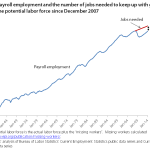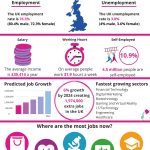
Digital Verification: A Modern Gatekeeper in Business and Beyond
In today’s fast-evolving digital arena, encountering a message prompting you to verify that you are human isn’t unusual. Recently, while accessing a popular news website, a brief interlude emerged: “www.axios.com Verifying you are human. This may take a few seconds…” It’s a short but powerful reminder of the invisible digital gatekeepers working tirelessly behind the scenes. These verification systems are not only protecting our online spaces but are also setting the stage for the future of business, manufacturing, automotive innovations, electric vehicles, and even the way we approach business tax laws and marketing strategies.
The seemingly trivial moment of waiting for that confirmation is a reflection of a much deeper and more critical conversation about digital security. For small business owners, industrial manufacturers, and high-tech automotive companies alike, ensuring secure digital connections has grown into an essential aspect of everyday operations.
The Role of Cloud-Based Verification in Bolstering Security
Digital trust has become a cornerstone of modern operations. The statement “Verification successful. Waiting for www.axios.com to respond… Ray ID: 972a281c9df4c28d Performance & security by Cloudflare” isn’t just a technical note. It symbolizes the robust measures that protect customer data, intellectual property, and vital company information. This process, managed by providers like Cloudflare, plays a key role in safeguarding business transactions and reinforcing customer confidence.
Businesses across various industries now find themselves facing tricky parts when it comes to online security. Whether it’s small business owners managing digital storefronts, industrial manufacturers conducting remote monitoring, or automotive companies integrating cutting-edge sensors into electric vehicles, the process of verifying digital interactions is the first line of defense against cyber threats. In a world where online interactions are full of problems and tangled issues, digital verification becomes an essential checkpoint for ensuring trust and security.
Security and Its Ripple Effects Across Business Sectors
Small Businesses: Overcoming the Intimidating Web of Online Security
For small business owners, managing online security can often feel nerve-racking. Many small enterprises operate on tight budgets while trying to secure a robust online presence. This is particularly true in marketing, where the intersection of digital advertising, social media engagement, and online transactions creates a host of tangled issues that must be sorted out.
Small business owners must find their way around various digital threats, using secure connection protocols and trusted verification systems to ensure that customers can shop, interact, and communicate safely. The relatively simple act of verifying that a visitor is human is a small twist in the larger narrative of digital security management, but its impact can be profound. By investing in reliable security systems, even the most straightforward digital storefront can protect itself from a barrage of cyber threats.
- Investing in cloud-based security solutions
- Regularly updating digital certificates
- Training staff to identify potential online scams
- Utilizing secure verification systems to minimize bot traffic
These steps help create a robust digital environment where small businesses can thrive even while working through tricky parts and managing the little details of online transactions.
Industrial Manufacturing: The Digital Backbone of Production
The industrial manufacturing sector, with its sprawling networks and intricate supply chains, is similarly reliant on digital security measures. From raw material procurement to the distribution of finished goods, every step in the production process is increasingly digitized. This shift to digital operations brings about its own set of challenging issues and subtle details that manufacturers must get into.
Modern factories and production plants are now embedded with sensors and automated systems that cover fine points of production efficiency. Often, these devices are interconnected via the internet of things (IoT), reliant on secure digital transmissions to coordinate their operations. With the rise of remote monitoring and digital automation, the importance of secure digital verifications—such as those deployed by Cloudflare—becomes even more pronounced.
Industrial manufacturers must figure a path through a labyrinth of cyber vulnerabilities that include:
- Securing network endpoints to prevent unauthorized access
- Ensuring that automated systems are protected from remote attacks
- Integrating security protocols during every step of digital transformation
- Responding to potential digital threats in real time
Such measures are super important to keep production running efficiently and to safeguard years of capital investment in industrial infrastructure.
Automotive and Electric Vehicles: Driving Reliability in a Connected World
The automotive industry, particularly in the realm of electric vehicles, is another high-stakes territory when it comes to digital security. Today’s vehicles are not just mechanical marvels; they are sophisticated computers on wheels, complete with an array of sensors and connectivity features. With vehicles increasingly connected to the internet, care must be taken to get around digital vulnerabilities that could compromise safety and functionality.
For automotive companies, digital verification processes are critical. A secure connection between a vehicle’s network and a central system can mean the difference between smooth operation and a potentially dangerous hack. Cloud-based verifications, similar to the short message experienced on Axios, have a direct impact on the automotive supply chain and R&D efforts in autonomous driving technology.
Electric vehicle (EV) manufacturers must account for various tricky parts in their digital security protocols. These include:
- Protecting over-the-air software updates
- Ensuring encrypted communication between vehicles and server hubs
- Monitoring digital signatures of onboard systems for potential breaches
- Implementing robust verification tools to thwart remote access attacks
Innovative approaches in digital security can be seen as a roadmap for shaping the future of automotive technology—where interconnected systems promise improved safety features, enhanced driving experiences, and a broader acceptance of smart mobility solutions.
The Economic Impact of Secure Digital Practices
Boosting Business Confidence Through Verified Connections
Reliable digital verification systems contribute directly to economic stability and growth. As consumers become increasingly wary of online scams and phishing attacks, businesses that invest in robust security measures reassure their clients and partners that they are safe to engage. This increased level of trust can lead to enhanced customer loyalty, more robust digital interactions, and stronger online reputations.
In today’s sensitive economic climate, where every dollar counts and every digital initiative is scrutinized, ensuring a secure online presence cannot be viewed as optional. It is a key factor in fostering an environment where small businesses, industrial manufacturers, and automotive firms can thrive without the constant distraction of worrying about digital impurities or potential bot attacks.
- Streamlined online transactions build trust
- Boosted customer loyalty through verified interactions
- Reduced risk of financial loss due to cyber threats
- Enhanced market reputation through visible security measures
These aspects are super important not only for broad-scale economic activity but also for nurturing innovation within emerging technological industries.
Business Tax Laws and the Digital Ecosystem
The world of business taxes has also not remained unaffected by the digital revolution. Tax laws and regulations are continually evolving, particularly as they relate to digital transactions and online business practices. Entrepreneurs and corporate managers alike must figure a path through a maze of small distinctions and subtle details regarding taxable digital assets, remote work deductions, and e-commerce revenue reporting.
Modern verification systems play a supportive role in ensuring that online transactions are logged accurately and transparently. They help create a digital audit trail that tax authorities can utilize to verify business activities without exposing sensitive information. In this way, keeping secure and verified digital records isn’t just about thwarting cyber threats—it’s also about creating trustworthy reports that satisfy both business needs and regulatory requirements.
Some of the essential steps businesses can take include:
- Maintaining detailed and secure transaction logs
- Investing in secure data storage solutions
- Engaging expert advisory services to interpret evolving tax guidelines
- Implementing verification systems that ensure the integrity of financial data
These measures, while sometimes overwhelming or intimidating, are a super important component of modern business practices that enable companies to remain compliant and competitive.
The Marketing World: Building Brand Trust in a Digital Era
Digital Credentials: Their Role in Marketing and Branding
Marketing in the digital age goes far beyond catchy slogans and vibrant imagery. It now hinges heavily on trust, transparency, and the reliability of digital platforms. When a consumer encounters a verification page that confirms a secure connection, it reinforces the image of a brand that cares about its customer’s safety and data security. This critical aspect of digital branding cannot be underestimated in an age where personal data is both a valuable commodity and a potential liability.
Brands that invest in top-tier cloud-based security and verification systems are often viewed as more credible. These digital credentials build trust and play a key role in the overall marketing strategy. Marketers can highlight the robustness of their digital security measures as a competitive advantage—a sign that they value both transparency and customer protection.
Beyond the technical benefits, there’s an emotional element at play. Consumers want to feel assured when they transact online. The subtle details, like the presence of a reliable verification prompt, help bridge the gap between technological complexity and everyday user experience. The interaction may seem small, but it conveys a powerful message: “We care about your safety.”
This approach not only distinguishes a brand from its competitors but also creates a more personable and trustworthy consumer experience, helping to turn one-time buyers into loyal customers.
Leveraging Secure Digital Strategies in Multi-Channel Marketing
As businesses expand their digital footprint, multi-channel marketing strategies must incorporate secure digital practices at every touchpoint. Whether it is in social media, email marketing, or direct e-commerce interactions, every facet of a brand’s online presence must be protected by robust security protocols. This is particularly critical when integrating digital advertising into cross-platform campaigns where customer information flows across multiple digital networks.
Using secure verification systems to secure every interaction means that businesses can confidently launch digital campaigns without worrying about potential breaches. It also means that customers receive a more trustworthy login, browsing, and purchase experience, which is essential for building long-term brand loyalty. In the realm of online promotions, where every click counts and every detail matters, a secure and verified connection is the difference between a safe customer experience and a missed opportunity.
The detailed steps involved include:
- Ensuring digital ads link to HTTPS-secured platforms
- Regularly reviewing and updating security certificates
- Using multi-factor authentication for sensitive user access
- Implementing advanced bot detection for online campaign pages
These approaches come together to create an environment where multi-channel marketing is not only effective but also secure and trustworthy.
Behind the Scenes: How Cloudflare Works Its Magic
Understanding the Verification Process in a Nutshell
The moment you see a message that reads “Verifying you are human. This may take a few seconds,” you are catching a glimpse of a sophisticated system that prevents harmful automated traffic from infiltrating the network. Cloudflare, among other security providers, is often at the helm of this process, serving as the digital lock and key that stands between genuine users and potentially harmful bots.
At its core, the process involves analyzing your web traffic, determining whether the incoming request appears to originate from a human or an automated script. The system employs various techniques to assess the subtle parts—the little details—in your browsing pattern, such as mouse movements, keystrokes, or even response times. Once the test is passed and verification is successful, your secure connection is established and you are allowed access to the website.
This approach, while it might seem like a nuisance to the everyday user, is a critical step. It not only protects sensitive data but also minimizes the risks of distributed denial-of-service (DDoS) attacks and other bot-driven exploits. In a world filled with tricky digital threats, having a reliable verification system in place is a super important piece of the digital security puzzle.
Comparing Verification Methods Across Industries
The verification procedures used by service providers like Cloudflare are far from one-size-fits-all. Different industries have their own unique challenges, and thus may require adapted methods to ensure data and system integrity. Below is a comparative table outlining how different sectors approach digital verification and security:
| Industry | Security Focus | Key Verification Challenges | Adopted Solutions |
|---|---|---|---|
| Small Business | Secure customer transactions | Tangled issues with budget constraints and basic digital setups | Cloud-based security, multi-factor authentication, trusted badges |
| Industrial Manufacturing | Operational continuity and data integrity | Fine points of automated and IoT systems across production lines | Network encryption, secure endpoints, regular security audits |
| Automotive & EV | Real-time secure vehicle-to-cloud communication | Protecting over-the-air updates and remotely connected systems | End-to-end encryption, robust digital signature verification |
| Marketing | Consumer trust and lead generation | Managing small distinctions between secure and insecure touchpoints | HTTPS certifications, verified ad destinations, secure landing pages |
This table highlights how multiple sectors identify and focus on the subtle aspects of digital verification to protect user data and maintain operational integrity. Each industry adapts its approach to secure its unique digital assets and customer interactions.
Looking Ahead: Future Trends in Digital Verification and Business Security
Integrating Artificial Intelligence and Machine Learning
As technology evolves, so too will the methods used for digital verification. The integration of artificial intelligence (AI) and machine learning (ML) is poised to bring transformative changes to the landscape of online security. With advanced algorithms capable of discerning the little twists in user behavior, businesses can expect more precise and adaptive security mechanisms.
For instance, AI-powered systems could analyze patterns over time to detect subtle differences between human users and highly sophisticated bots. This means that verification methods could become even faster and more accurate, reducing the nerve-racking delays that sometimes accompany the security checks we all encounter online.
Key developments on the horizon include:
- Real-time threat detection using predictive analytics
- Enhanced behavioral biometrics for secure access
- Adaptive learning systems that refine response strategies over time
- Automated risk assessment models that tailor security measures to specific user profiles
The potential of these advancements is super important for ensuring that as our online transactions and digital interactions become more complex, our security measures evolve to meet these new challenges head-on.
Regulatory Changes and the Need for Updated Verification Protocols
Another key component going forward is the evolution of business tax laws and regulatory requirements related to digital security. Governments and regulatory agencies are increasingly aware of the digital ecosystem’s role in economic and social stability. Consequently, new regulations could demand even more rigorous verification protocols from businesses of all sizes.
These regulatory shifts require companies to get into the fine points of compliance and data protection. Keeping pace with changes in laws—especially those affecting financial records, online transactions, and customer data—will necessitate investments in next-generation verification systems and security audits. There is no room for settling with outdated practices when every online transaction can potentially open a window to cyber threats.
Businesses might consider measures such as:
- Regularly updating digital security policies to adhere to new regulations
- Engaging in comprehensive risk assessments to pinpoint vulnerabilities
- Training employees to recognize and adapt to updated regulatory landscapes
- Investing in partner solutions that offer seamless integration with evolving regulatory guidelines
By staying ahead of regulatory and technological curves, businesses can continue to foster environments that are not only secure but also trusted by consumers and regulators alike.
Closing Thoughts: Trusting the Digital Path Forward
Ultimately, digital verification processes—like the one experienced on Axios with Cloudflare’s protective oversight—serve as a microcosm of the larger challenges and triumphs within our interconnected digital world. From small businesses to industrial giants, every entity is working through its own set of tricky parts, tangled issues, and nerve-racking challenges to create secure, reliable interactions in a space that’s full of potential hazards.
As digital transformation continues to shape industries such as automotive innovations, electric vehicles, and even the nuances of business tax law, companies must ensure that their verification systems and security protocols are both robust and adaptive. Not only does this foster consumer confidence, it also sets the stage for a more resilient economy that can weather both digital and economic storms.
While the momentary pause to verify whether you are human might seem like an annoying delay to some, it is an essential checkpoint in a digital environment that is replete with pitfalls and hidden complexities. Whether you are a startup owner learning to steer through digital risks or a multinational navigating the subtle details of cyber threats, the importance of secure, efficient verification practices cannot be overstated.
In an age where every online interaction is loaded with potential dangers, investing in secure digital practices is not just about protecting data—it’s about building trust, fostering innovation, and ultimately cementing a safer, more reliable digital future for businesses, consumers, and entire industries alike.
Business leaders, technology experts, and policymakers alike must continue to work together to address the evolving twists and turns inherent in modern digital operations. By partnering with providers who understand the nitty-gritty of online verification and by staying informed about emerging threats, organizations can mold a future where digital transactions are as secure as they are efficient.
In conclusion, while a simple verification message might seem trivial, it is a powerful symbol of the digital fortifications that are strategically shaping our economic landscape. The assurance that comes after a successful verification is more than just a technical victory—it is a beacon of trust in an era that increasingly demands digital accountability. As we move forward, it is super important that every stakeholder from small businesses to vast industrial enterprises stays committed to investing in and upholding these secure practices.
Ultimately, the blend of secure digital verification, strong regulatory compliance, and forward-thinking technological innovation will pave the way for a future where every business interaction is protected, every digital journey is safe, and every connection—verified or otherwise—builds a stronger, trust-based digital community.
Originally Post From https://www.axios.com/2025/08/21/jobs-market-hiring-ai
Read more about this topic at
Cloudflare test – SSL / TLS
Website security checklist | How to secure your site


